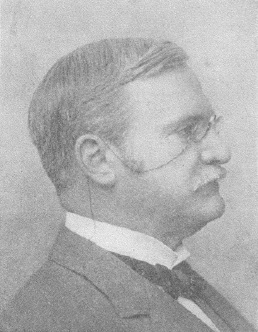William Mecklenburg Polk facts for kids
William Mecklenburg Polk (born August 15, 1844, died 1918) was an important American doctor. He was known for his work in medicine and for teaching at universities. He also served in the military during two different wars.
Contents
About William Mecklenburg Polk
William Mecklenburg Polk was born in Ashwood, Tennessee. His father was Leonidas Polk, a well-known figure who was both a bishop and a general.
Early Life and Military Service
During the American Civil War, William Polk served in the Confederate army. He fought under his father's command. He started as a cadet and rose to the rank of captain. This was a significant achievement for a young man.
Medical Education and Career
After the war, William Polk decided to become a doctor. He studied at the College of Physicians and Surgeons in New York City. Once he finished his studies, he stayed in New York to practice medicine.
He became a professor at several famous medical schools:
- From 1875 to 1879, he taught about treatments and clinical medicine at Bellevue Hospital Medical College.
- From 1879 to 1898, he taught about childbirth and women's health (gynaecology) at the University of the City of New York.
- Later, he became the dean (the head) and a professor of gynaecology at Cornell University Medical College.
William Polk was also involved with many hospitals and clinics. He was the president of the New York Academy of Medicine from 1910 to 1914. This was a very respected position.
Later Life and Family
In 1917, William Polk volunteered to serve in the military again. He became a First Lieutenant in the U.S. Army Reserve Medical Corps. He passed away on June 23, 1918.
His son, Frank Polk, also became a notable person. Frank served as a counselor for the U.S. Department of State during World War One. He later became the first Under Secretary of State for the United States.
His Writings
William Mecklenburg Polk also wrote a book about his father. It was called Leonidas Polk, Bishop and General. The book was first published in 1893 and then a new, two-volume edition came out in 1915. He also wrote many articles for medical journals, which were later printed again.


